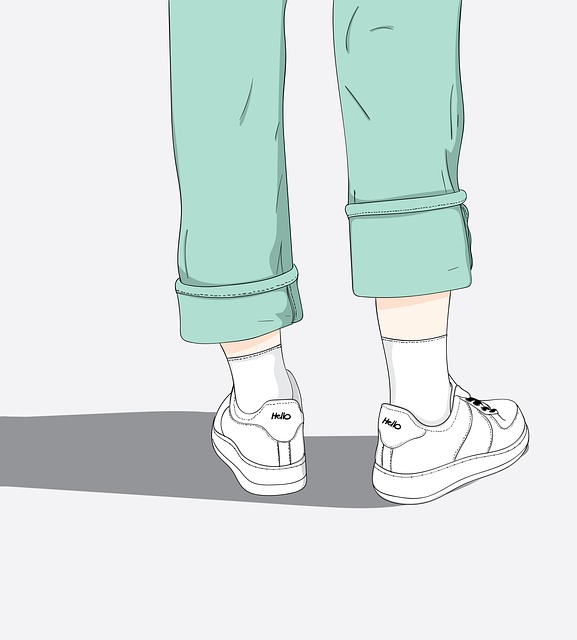This post may contain affiliate links. Please read the disclaimer for more information.
Stand up and hold yourself in a relaxed position. Walk to the other end of the room and back. Squat down into the lowest squat position you can hold.
How did your feet look during these 3 activities? If they were turned outward more than 12 to 15 degrees, they are going to need some more attention.
I am in this camp, myself. Many people are to be honest, because it is a sign of a lack of range of motion.
When I stand up straight, I often have my feet both pointing slightly out. When I walk, this can be a problem as well. With squatting, although I still struggle to get my heels to the ground, I still want to turn my feet out anyway. Again, this runs very consistent with other people I observe.
At the gym for example, everyone squats with their feet pointed out. Some people point them really far out because it appears to allow them to put more weight on their back. All things considered though, this makes a bad habit actually dangerous.
When your feet are pointed out, many things are happening throughout the leg that go beyond simply having bad posture.
In a nutshell, when you turn the feet out and bear weight, your arches and ankles will collapse in further, your knees collapse in (valgus knee), your femur (thigh bone) externally rotates, and you lose hip function because this positioning is unstable for the hip.
If this doesn’t paint the picture, you can basically think of someone who walks with their legs completely open. What should be the inside of their legs are now pointing forward. This is a very harmful position to be operating in because it affects all the movement in your life.
Kelly Starrett, author of Becoming a Supple Leopard, notes the following:
“If you’re missing ankle range of motion, you have no choice but to compensate into an open-foot position, meaning that you stand, walk, run, and move with open knees and collapsed ankles. When this happens, you can’t expect everything to be okay….If you’re missing foot extension or dorsiflexion, you’re going to turn your feet out to solve that range of motion problem and buffer the issue. Do this and ultimately say hello to bone spurs, Achilles tendonitis, Achilles ruptures, and a slate of other ankle problems. You can avoid all this if you maintain full ankle range of motion and understand good positioning. You have to make sure that the large drivers of your ankles are full range and supple.”
This foot position is actually another contributor to bunions as well, I recently learned. My foot position could’ve also been contributing to the formation of the bunion I had on my foot previously.
Essentially, what we’re looking to do here is some crucial injury prevention work. This foot turnout problem can wreak absolute havoc on your body, including ACL, MCL, or meniscus tears for many athletes, all because they’ve been operating in the unstable, open-foot position.
We want to correct this now so we never have to deal with the general pain, tightness, and catastrophic injury that may follow.
Next week, I will cover what the root causes of foot turnout are and how you can go about resolving them.


Leave a Reply